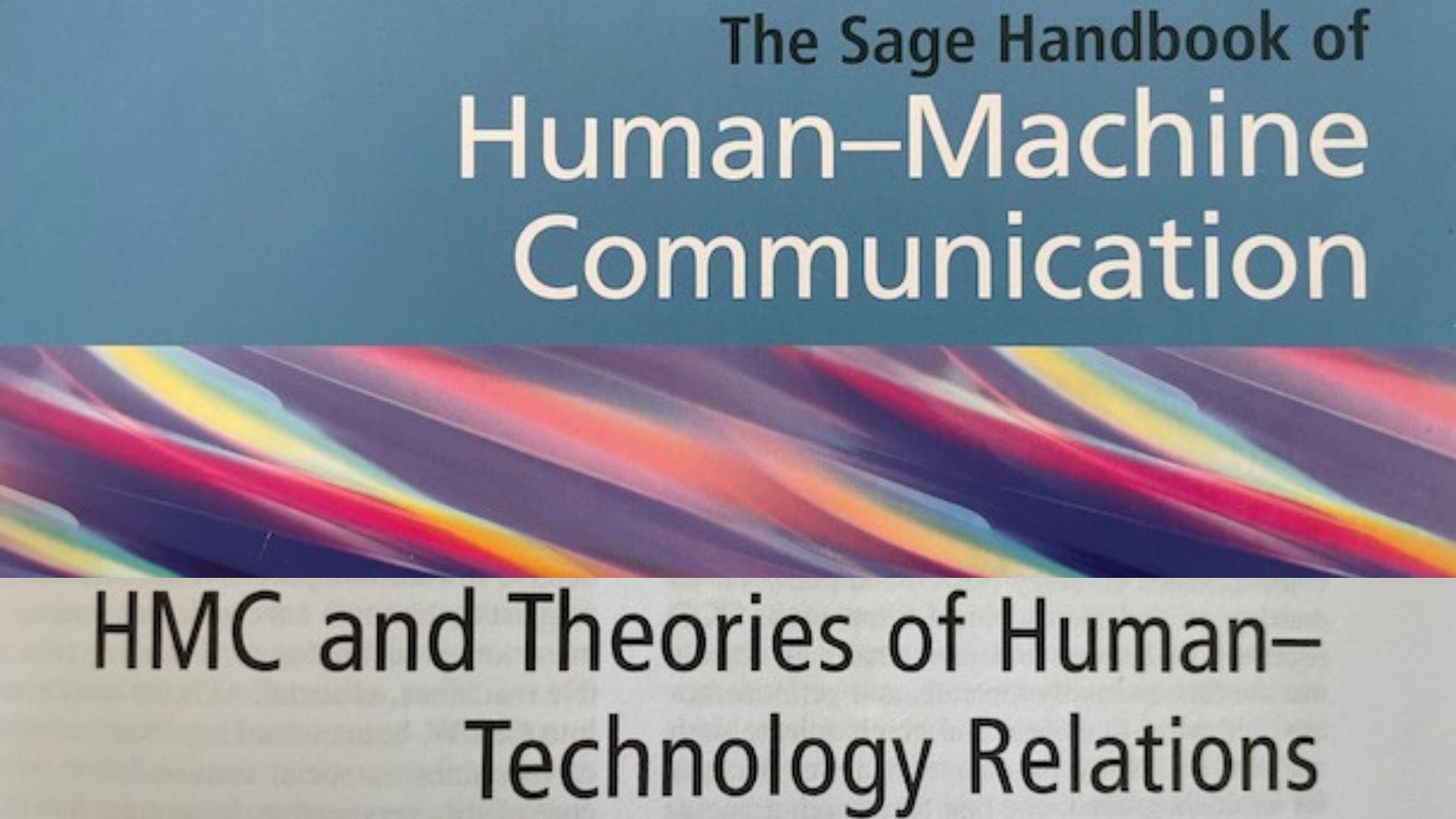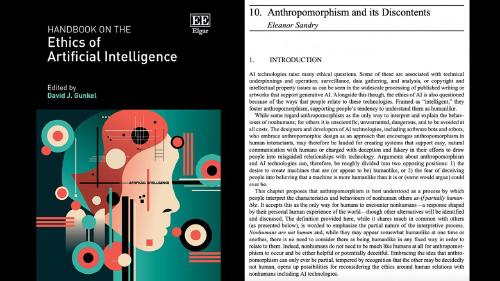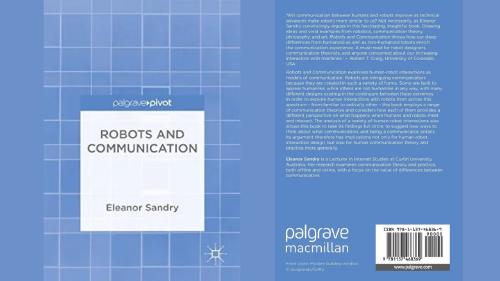Sandry, E. (2023). HMC and Theories of Human-Technology Relations. The SAGE Handbook of Human-Machine Communication. Eds. Andrea L. Guzman, Rhonda McEwen & Steve Jones. Sage. (Free to read or email me for a copy)
This chapter draws together a set of relational and ontological approaches that can be used to consider human–technology interactions and relations. Its overarching aim is to explore how communications scholars can theoretically and practically understand people’s direct interactions with machines as human–machine communication (HMC). In general, research into HMC identifies machines as active communicators, not simply as tools enabling human–human communication. This positions machines as active in the world, so theorizing HMC requires a reconsideration of how this activity can be described and analyzed, a move that can be linked with a broader “nonhuman turn” in scholarship that involves “decentering the human” (Grusin, 2015, p. vii). This scholarship depicts “a world populated not by active subjects and passive objects, but by lively and essentially interactive materials, by bodies human and nonhuman” (Bennett, 2015, p. 224). The approaches discussed in this chapter therefore provide ways to recognize nonhuman machines either as members of dynamic systems within which communication emerges, or as active communicators in their own right. These approaches are less widely used than some of the other theories and methods covered elsewhere in this book, but they provide productive ways to rethink how HMC works and how human–machine relations develop over time.




